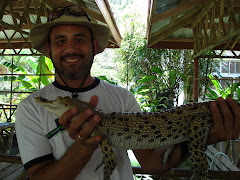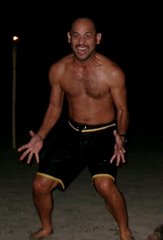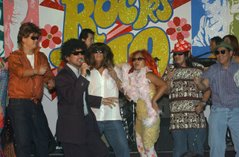 Moma and Dad just celebrated their 50th Wedding Anniversary last December 27. Amazing! I can still vividly remember celebrating their 25th Anniv in our house in Q.C. then we also celebrated their 40th in Tagaytay.
Moma and Dad just celebrated their 50th Wedding Anniversary last December 27. Amazing! I can still vividly remember celebrating their 25th Anniv in our house in Q.C. then we also celebrated their 40th in Tagaytay. This celebration was especially poignant because many of Dad's siblings have passed away... Tito Carlitos, Tita Hermy, Tito Dido, Tito Rick, Tito Jaiming. Most of them passed away barely 12 months ago... Lola Lourdes (Mom's mother) also passed away a few days before the celebration.
Here's the speech I gave during the celebration in honor of my beloved parents:
"Thru out the 50 years of marriage, mom and dad's roles have evolved. As a newly married couple, it was just the two of them. Caring for each other and building their relationship as LOVERS. But when the kids started coming one after the other, they became true PARENTS. One as the PROVIDER, working to bring in the money needed to sustain the family, the other providing the motherly love as a CAREGIVER and selflessly sharing her presence needed to build the kids' personalities and values. Both roles, equally important. Both were ROLE MODELS sacrificing much for the sake of the family. Dad practically had to handle 2 jobs as he shuttled from Bacolod to Manila handling the 2 offices. Mom endured years of stress as the mother of 4 rambunctious kids while Dad often left her alone... to play volleyball in Luguay.
I can't imagine how Mom pulled thru those trying years... I still lay claim to the record of most house damage in the least amount of time. I ruined 50000 worth of chinese antiques in a split second after I cartwheeled into a shelf full of chinese jars. You guys ever wonder why mom gets nervous everytime I get near her chinese stuff? Kaya panay bato, bakal at kahoy na lang ang binibigay niya sa akin pamana. mahilig naman daw ako sa tribal artifacts.
Then, when dad joined the government, mom had to become more entrepreneurial and so she too became a PROVIDER.
They were EDUCATORS too. Mom honing our language skills and Dad terrorizing... Ah este training us in Math. They were COACHES in more ways than one. All of us boys grew up loving sports. But more than that we got an earfull of wise, life-coaching advise... Solicited or unsolicted... but nonetheless very much appreciated.
As we began our careers and started our own families, dad and moms roles continued to evolve. No longer doting parents, they became our SAFETY NETS. Always around to provide us the financial and morale support when needed. Mom can u babysit? Mom can I borrow the car? Dad can u lend me some money? Pay u back in 5 years.
All thru out these changing times, I've always been amazed at how my parents have adapted to these changing roles with so much grace. Sometimes I think it is us kids who have not adapted well to these changes. We falsely think our parents will always be the same way. Forever young and forever a part of growing up.
I recall facing stark reality just a few years ago when I foolishly invited dad to ride my mountain bike. Dad, already in his 70s, rode the bike alright. But I forgot to tell him where the brakes were so he careened downhill, lost control, and flew off the bike, landing face first into the dirt. I distinctly remember wondering what the jail term was for killing your own dad.
Luckily, despite the temporary amnesia, dad recovered without permanent damage. I think. I still get a rush of guilt when he calls me up and forgets why he did. Senior moment lang yun. Di ba dad?
Nowadays, we are all grownup and thru the grace of God we are all healthy, more self sufficient and comfortable, living our lives and bringing up our own families... It may seem that mom and dads roles in our lives aren't as evident.
We think our parents will always be around, ready when we call on them for help, and yet keeping them a safe distance away so they don't cramp our style... .
Many times, instead of showing our gratitude for all the years of parenting, we rebuff them and shun their help.
Ironically, I think our parents way of pushing us to value our independence and to make our own way, is partly what drives this behavior. It is truly their greatest legacy that they have equipped us with the tools to build our own families.
So, Dad and Mom, the next time you feel your help is being snubbed... just remember that its your own fault for teaching us too well!
Yes we can never avoid the fact that our lives are continually changing, our roles evolving. I realize that eventually, our new role will be to care for Mom and Dad as they have cared for us.
One thing will never change, it is the fond memories of life's little lessons, and the love that drives it all. Next year, my family will likely be in Australia, although a part of our hearts will always remain with Mom and Dad. Mom, Dad, don't worry, we will always be there for you even if we're physically away.
I love you Mom. I love you Dad.













